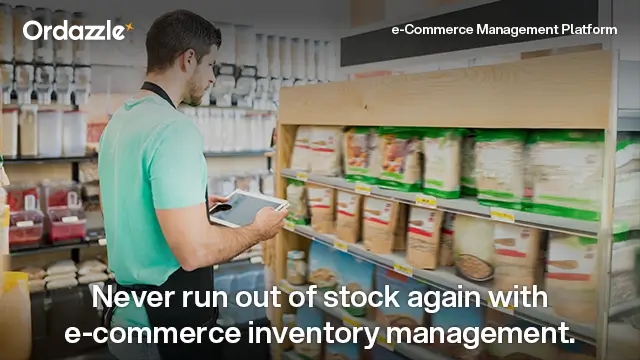Enterprise E-commerce Inventory Management System – Key for Large Online Brands to Master Stock Control

One of the biggest challenges you will have to face as an e-commerce brand is how to maintain optimal inventory levels. It needs to be enough to fulfil your orders while not so much that it adds to your storage costs. To overcome these challenges, large e-commerce brands and sellers must look to implement a fully integrated enterprise e-commerce inventory management system. These advanced enterprise level systems revolutionise stock management by optimising stock levels, minimising overstocking, and stock outs, and streamlining the supply chain process.
Efficient stock control is crucial to maintaining a competitive edge in the ever-evolving e-commerce landscape. Overstocking can tie up capital, increase holding costs, and lead to unnecessary markdowns, while stock outs can result in lost sales and dissatisfied customers.
In this blog post, we will explore the numerous ways in which inventory management platforms are transforming large online brands’ stock control strategies.
Accurate demand forecasting
One of the key features of enterprise inventory management platforms is their ability to accurately forecast demand. By analysing historical sales data, market trends, and other relevant factors, these systems can generate precise demand forecasts.
This empowers online brands to make informed decisions regarding stock replenishment, ensuring that the right products are available at the right time. Accurate demand forecasting helps minimise stock outs by enabling proactive inventory management.
Real-time inventory tracking
Inventory management systems offer real-time visibility into stock levels across multiple sales channels and warehouses. This real-time inventory tracking ensures that online brands have accurate information about their stocks, allowing them to make data-driven decisions promptly.
With this level of visibility, brands can avoid stock outs by replenishing inventory in a timely manner. Furthermore, it helps prevent overstocking by providing insights into slow-moving items or identifying opportunities for cross-selling and upselling.
Automatic inventory updates across all the sales channels can also be a huge advantage in terms of reducing the manual tasks involved. This will ensure you don’t receive any orders for products that are out of stock, for instance.
Centralised stock management
Enterprise inventory management systems centralise stock management, consolidating data from various sources into a single platform. This centralised approach allows brands to streamline their operations, saving time and effort.
Rather than managing inventory separately for each sales channel or warehouse, online brands can control stock levels, pricing, and promotions from a unified interface. Think of it like a master dashboard that offers a view over your end-to-end e-commerce operation. You can see the pieces moving in real time. Centralised stock management reduces the risk of errors, improves efficiency, and enables brands to scale their operations effectively.
Automatic reordering and stock optimisation
Automated reordering is significant for large online brands when it comes to inventory management. Enterprise inventory management systems can be configured to automatically trigger purchase orders or warehouse transfers when stock levels fall below a predefined threshold. This eliminates the need for manual intervention and reduces the risk of stock outs.
Additionally, these systems leverage advanced algorithms to optimise stock levels based on demand patterns, lead times, and other variables. By dynamically adjusting reorder points and safety stock levels, brands can strike a balance between minimising stock outs and avoiding excessive inventory.
Integrated supply chain management
Enterprise e-commerce inventory management platforms often integrate seamlessly with other supply chain management tools, such as warehouse management systems and order management systems. In fact, such systems are often integrated together as part of a large-scale enterprise e-commerce management platform such as Ordazzle, allowing online brands to manage all aspects of their e-commerce operations under a single system.
This integration enables a smooth flow of information and data exchange between different business functions, ensuring synchronisation across the entire supply chain. By facilitating efficient communication and coordination, integrated systems enhance order fulfilment, inventory accuracy, and delivery timelines.
Conclusion
The advantages of an enterprise inventory management system are undeniable. E-commerce inventory management systems provide the necessary tools and capabilities to optimize stock levels, reduce overstocking and stockouts, and streamline the supply chain process. But the more the number of tasks you can delegate to it, the bigger its advantages you can take, including standardized, always-visible processes across all stages of the order lifecycle. A good e-commerce inventory management system will have your back by ensuring no delays in updating your stock levels across several sales channels. Get a demo of Ordazzle to know how it can elevate e-commerce management for you.


